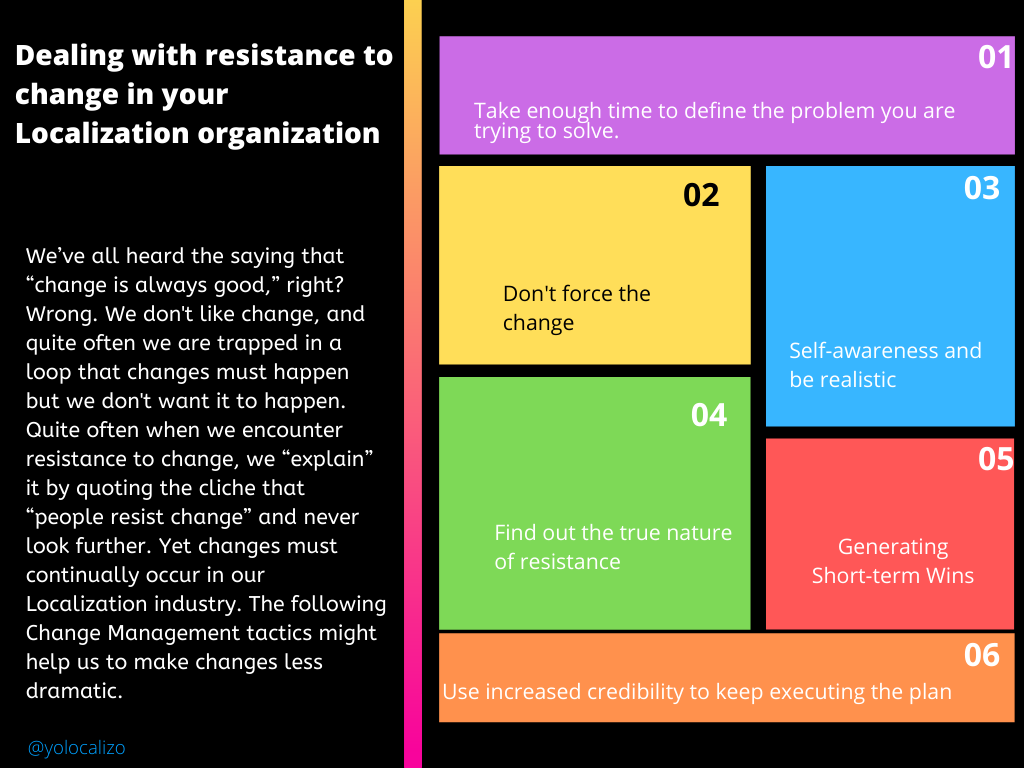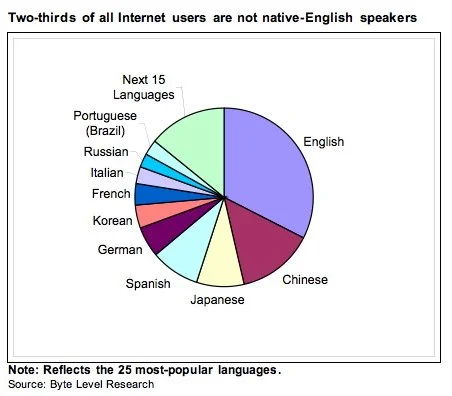Breaking Through Borders: Tips for Building an Effective Content Localization Strategy
Many companies underestimate the effort required. Yes, they look at the content, but they don't really consider the effort required to expand internationally and achieve growth. Developing a successful global content strategy must be a well-orchestrated effort between the different parts of an organization.
The internet has made it realistic for pretty much any company to sell products or services in overseas territories. Also COVID gave a definitive boost to certain industries such as eCommerce, eLearning, and gaming. But many companies are still not fine-tuning their international content strategy, making the same mistake over and over again.
That mistake is thinking that they can develop one message and run with it - translated or not - in every single region. They think of this as brand consistency or unifying the brand across markets. However, in many situations, even global level brands may be perceived as something different in multiple markets. Even though they may have global awareness, they may not have global understanding.
A global content strategy will minimize this issue.
We are in the content era, and creating quality online content adapted to different markets is more important than ever. Our world revolves around content. Buying decisions are often based on experiences not with products, but with information about products. People consume more content in more ways than ever. We have printed books, newspapers, and magazines, e-readers, smartphones, and tablets. We have TV, radio, YouTube, Instagram, Pinterest, Netflix. We consume more content in more ways than ever before.
Naturally, with the growing importance of content, a lot of attention is being paid to content strategy. This is a good thing. Companies need to stop throwing content out to the world without a good reason and manage content strategically.
However, what about global content? What about all the content that your company produces for people in other parts of the world? Content professionals who focus on in-country strategy fail to think strategically about millions of words, images, and media that are destined for other languages and locales.
This week, I bring to my blog the seven steps you need to put in place to create a global strategy for your content and impact far beyond your primary market. Hopefully, this can be useful for anyone who needs advice and guidance when it comes to shaping and delivering an effective Content Localization strategy for their target markets.
Let's get on with it!
Click HERE to download this amazing infographic 👻
Define goals
A goal can be many things, but what it's not is a dream or a hope. We cannot hope that by having our content localized, everything will just work out fine and we'll magically achieve international growth. Taking the time to reflect on what we want to achieve by localizing our content is crucial. Think about the results you want to see by localizing your content.
Choose markets
Deciding where to go is an important decision that you need to make soon, so your content localization strategy makes sense. But how should you approach the decision of selecting exactly which international markets to start localizing first?
A good starting point is to use Google Analytics (or any other platform you use to monitor your traffic) and analyze your top-performing market. From here, go deeper into the regions and markets that are driving traffic to your product. Sometimes, when this is done, you may even be surprised by the insights you found. Perhaps by doing this, you'll identify a small but growing audience from a market that you were not expecting!
Another valid approach to choose your markets is to go where others have gone already. I know this is not very original, but hey, it works! Check out the markets your competitors are operating in and then map it with your plans to analyze gaps. With these two approaches, you will be in a very good position to decide which markets you might go to.
Identify content to localize (and categorize)
It's one thing if you want to expand your brand, your product to different international markets, but it's quite another thing if you want to translate all your content at once for multiple markets. Maybe some support material is unnecessary to include in the first iteration of your content localization strategy. Instead, maybe you want to focus your efforts on your marketing or legal content, or content that supports your UX. Whatever you decide, make sure you create a matrix in which you mark your content and its priority for the different markets you identified in the previous step.
Send content to localize
This step should not be taken lightly because it is obvious. This step is where we will start planting the seed for an effective localization content process with our LSP (or internal translation team when applicable).
At this point, we must ask ourselves questions such as
At what point in the process does the content go into translation?
Should we send localization requests one by one, or do we better group the requests and thus guarantee translation volumes and perhaps a better rate?
What information should we provide to the localization teams so they can work their magic and get translation efforts underway? Who in my organization can provide that additional information?
What additional information, such as localization kits, style guides, glossaries, etc should be provided to facilitate content localization efforts?
The answers to these questions and the time you spend carefully planning this phase often separate an effective localization process from a less effective one.
Monitor the content being localized
This phase is about ensuring that the process runs smoothly. For example, we need to make sure that the schedule is on track, that there is a process in place for handling questions and answers, etc.
“If I had to sum up in one sentence what is done during this phase, it would be... Trust but verify”
Deliver localized content
Once the content is localized, the workflow for its return is another area that needs to be shaped.
This phase is similar to "Send content to localize" but in reverse.
Make sure that in this phase, there are answers to important questions that may arise, such as:
Are all languages delivered simultaneously?
Is there one main point of contact to validate the handover, or are there multiple owners with language breakdowns?
In what format are the localization files delivered when they are returned?
Who validates the import into the TMS/CMS?
I have seen teams pay little attention to the process of receiving localized content from their LSP, and this ends up in a loss of control of which languages were delivered and without a clear understanding of who was delivered and when.
Measuring results
For something to be a goal, you must know when to reach it. When you measure your progress, you can see how you're doing, and that's a powerful motivator that helps you stay on track. If you make good progress, your confidence in your content localization strategy and your motivation increase.
The first step in measuring your progress is in the "Define Goal" phase we saw earlier. When setting a goal, you should set a goal that can actually be measured. Some examples of objectives you can include in your content localization strategy are:
Number of unique visits from target markets
Bounce rates on localized sites
Average engagement rate on social networks by content type
Interaction time with localized content
Track your data, compare it to your goals, and create dashboards you can share with key stakeholders.
For this, there are different tools at your disposal, e.g., Google Data Studio.
Conclusion
These 7 phases of the content localization strategy are our best ally to ensure that our content is effective in multiple markets.
Take the time to identify and categorize your content, think about workflows for your technology setup and for your interaction with stakeholders, and, over time, you will see the quality of your localized content will improve, your costs will go down, and your engagement with your target markets will increase.
Doesn't sound like a bad plan, does it?
Have a great week!
@yolocalizo













This post explores the key differences between working on the buyer versus the provider side of the localization industry. While there are some tasks common to both, others vary significantly in areas such as people management, operations, strategy, and metrics. The article breaks these tasks into four categories, providing examples for each to highlight these distinctions